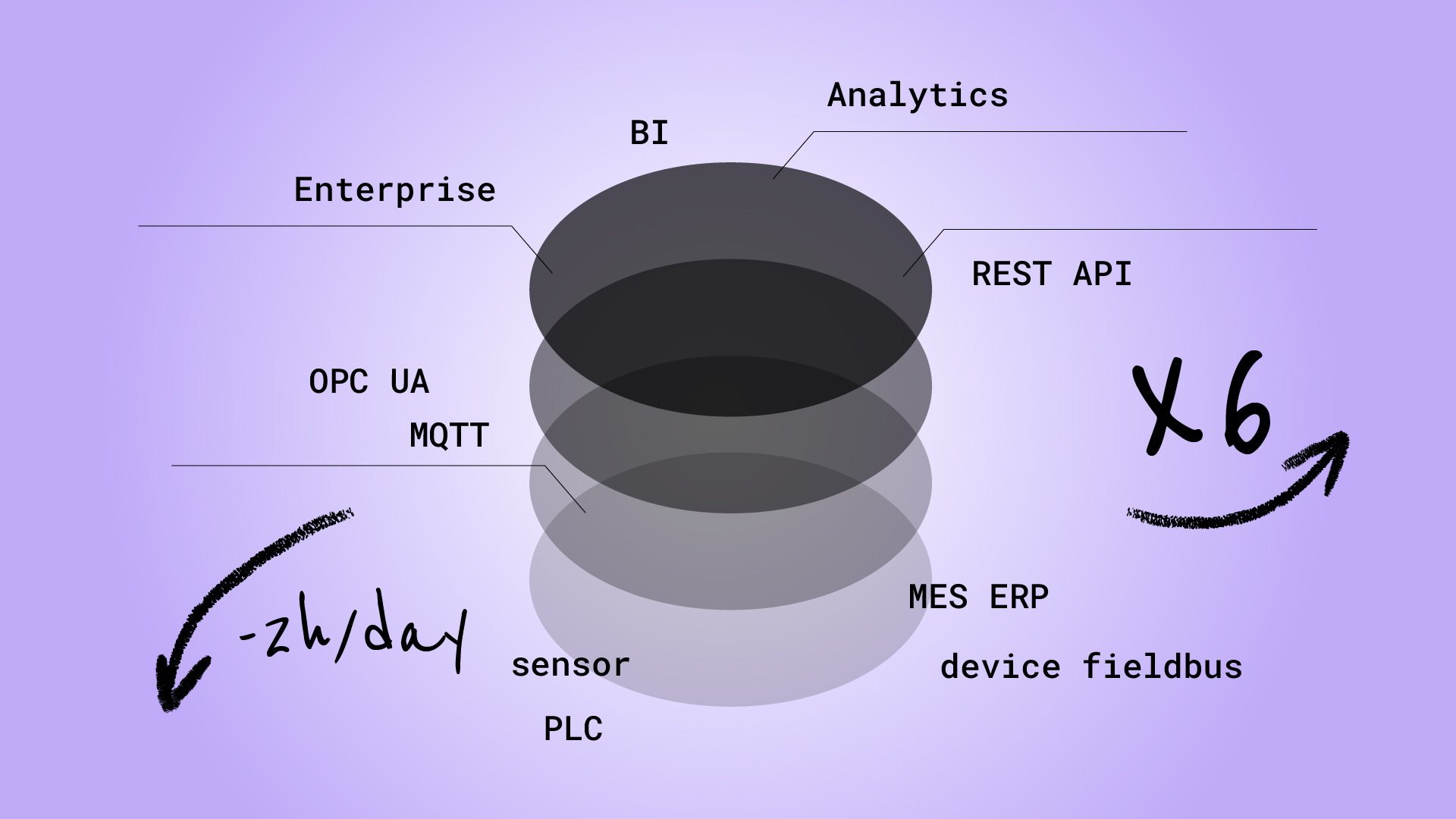
SPE, Single Pair Ethernet

With Single Pair Ethernet, for the first time, it is possible to speak the language of the cloud with every sensor, even the thinnest and miniaturized ones. The field level and all its participants become capable in real time, intelligent and therefore part of the IIoT.
With the growth of IoT, the need in the connectivity world to work on transmitting energy, and data, simultaneously is increasing. The increasing level of digitization of industrial plants requires further development of existing Ethernet cabling. For sensors and local modular control units, in particular, conventional wiring concepts are no longer able to meet the new requirements in terms of space and installation effort.
Single Pair Ethernet, the beginnings
In the industrial environment, which is looking toward IIoT (Industrial Internet of Things) and Industry 4.0, product requirements and performance have changed and electronic components must necessarily be faster and space-saving. It is in this world that Single Pair Ethernet (SPE) was born.
Ethernet, created in the 1970s by a team of researchers at Xerox Parc and ratified by the IEEE as a standard in 1983, has become the dominant LAN technology and continues to evolve today with multiple variations for different types of applications. In terms of data rate, it has gone from 10Mbps in 1983 to 100Mbps in the Fast version of 1995, up to the terabit assumed for the near future.
The different standards define not only the data rate and maximum distance, but also the type of cable to be used. For example, for Ethernet 10Base-T at 10Mbps per 100m, Cat 3 or Cat 5 UTP cables are indicated, where, as is well known, the acronym UTP stands for Unshielded Twisted Pair, and the letter "T" highlights the "Ethernet over twisted pair" technology, that is the use of cables with twisted pairs as the physical layer of the network, unlike fiber optic networks, in which there would be, for example, the indication SR and LR, for Short Range and Long Range fiber optics.
Twisted pair and cabling
A modern twisted pair Ethernet cable, for example a Cat 5, contains 8 conductors, organized into 4 pairs, and while all 8 conductors are used for gigabit Ethernet, only four are required for 10Base-T at 10Mbps and 100Base-T/Fast Ethernet at 100Mbps. The two mentioned versions of Ethernet require only 2 pairs to operate, in fact two simplex channels, one pair to transmit data and the other to receive it, pins 1-2 and 3-6 of connector 8P8C, and it is possible, but not standard compliant, to use the other 2 pairs (pins 4-5, 7-8) for Power over Ethernet, for a second 10BASE-T or 100BASE-T. The reference to the 8P8C connector, although correct, is unusual since for Ethernet the most used term is RJ45, Registered Jack standard number 45.
SPE, the objectives
Connections involving a single pair of wires are not an absolute novelty, and in this regard it's enough to remember RS232 and CAN, whose limited performance, combined with simplicity at low cost, have been sufficient for many applications. But with Single Pair Ethernet we want to create the basis for an infrastructure that simplifies and improves IIoT and Industry 4.0 applications, and the interest of companies is proven by joint initiatives, as in the case of the SPE Industrial Partner Network that sees as distinguished founding members.
Connectors for Single Pair Ethernet
The achievement of the goals of Single Pair Ethernet technology requires the definition of connection elements consistent with a more agile and lightweight cabling. By ISO/IEC JTC 1/SC 25/WG 3 (standards for customer premises cabling) and TIA (Telecommunications Industry Association) an international selection process had been initiated since 2018 to define uniform interfaces, in which more than 20 national expert committees participated.
As a result, they prervalced and two plug-in interfaces were selected: for building cabling, the proposal from CommScope was chosen, and for industrial applications, the proposal from Harting. In detail, the selected interface for industrial applications, now IEC 63171-6 standard, is based on the design of the Harting T1 industrial connector, designed to guarantee SPE data rates and with adequate features to build an infrastructure for the whole IIoT ecosystem. The mating or pluggable face plate is designed to be incorporated into connectors with multiple MICE levels (Mechanical shock/vibration resistance, Ingress protection, Chemical resistance, EMC compatibility): MICE Level 1, which corresponds to IP20, for standard office environments; MICE Level 2 for rugged implementations with additional protections for factory floor environments; MICE Level 3, for fully protected connectors for outdoor applications and the harshest industrial environments; for this MICE level, the "mating face" can be incorporated into fully sealed M8 or M12 products, and M8/M12 push/pull versions have been announced for fast connection. In essence, Harting's T1 solution can be used with a variety of connector housings to meet different application requirements, from IP20 up to IP65/67. So the SPR ecosystem has taken shape, now it's up to the market to decide its direction.



